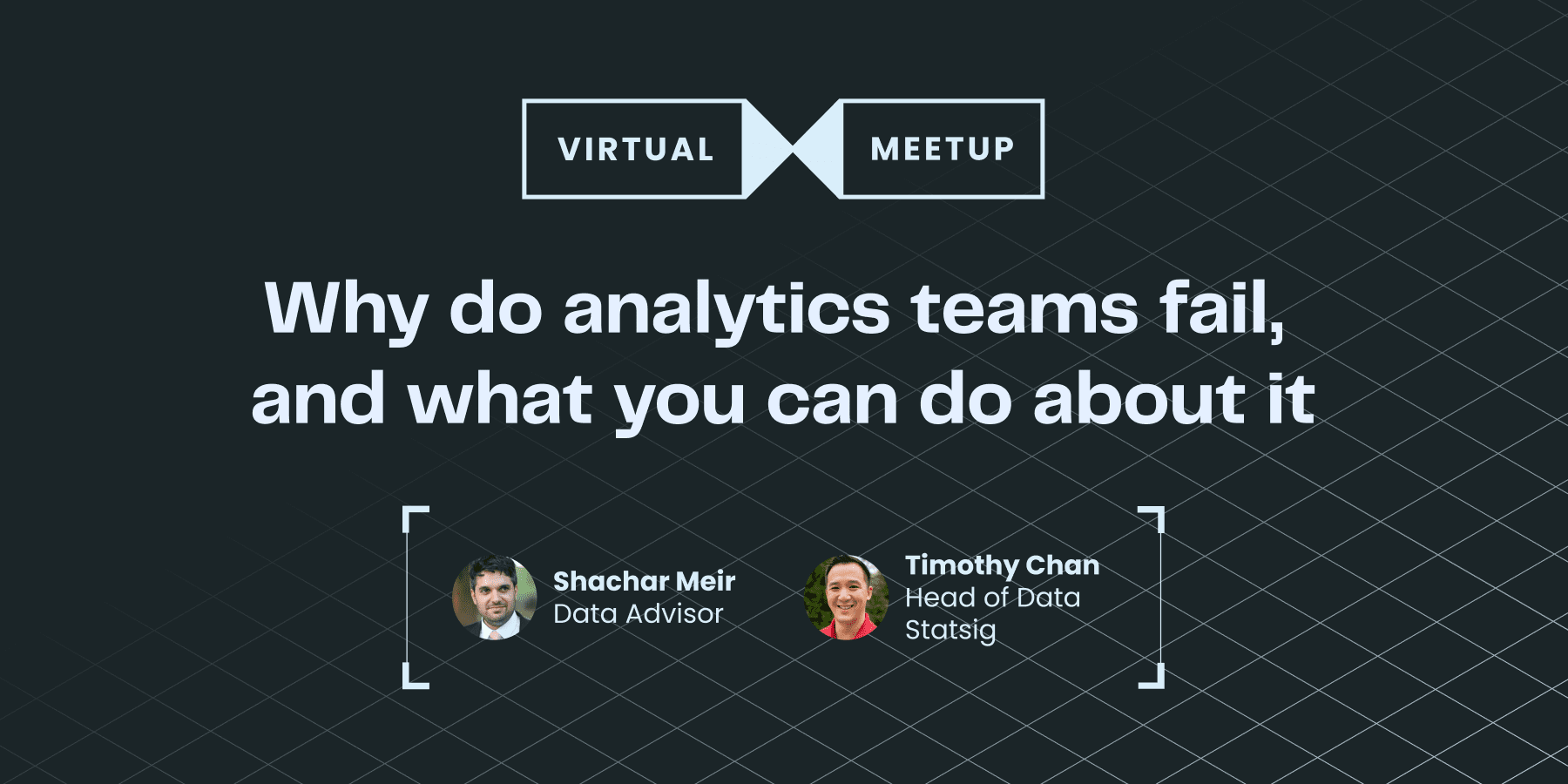
Working with Tim and Shachar is always a pleasure, and our recent virtual meetup was no exception.
For this event, we delved into the common challenges faced by analytics teams, focusing on the crucial shift from being perceived as service providers to becoming strategic partners within their organizations.
Tim and Shachar shared valuable insights from their experiences, highlighting the importance of effective communication, collaboration with product teams, and aligning data efforts with business goals.
Below, I’ve outlined the key takeaways and some of my favorite insights from our conversation.
Key takeaways:
Communication and context matter: Data professionals often struggle to secure a “seat at the table” because they don’t clearly communicate the business value of their work. Shachar emphasized that data practitioners should focus less on technical jargon and more on how their work solves specific business problems.
Shifting from service to partner mindset: To transition from a support role to a thought partner role, Tim believes that data teams must proactively identify opportunities that align with business objectives before the product team does. Building relationships, understanding business needs, and proposing solutions early on are crucial.
Balancing quick wins with strategic goals: Tim shared his early experience at Statsig saying it’s important to balance quick experiments that yield immediate growth benefits with long-term initiatives that align with the company’s vision. Quick wins should not distract from the bigger picture, and large-scale growth experiments should be thoughtfully prioritized.
Effective dashboarding strategies: Dashboards often lose their relevance over time because they focus on overly granular or tactical issues. Shachar advised consolidating dashboards to focus on high-level metrics that align with long-term goals, ensuring they remain useful as the business evolves.
Friction can be beneficial: Adding a bit of “friction” by asking clarifying questions or delaying non-essential requests can help filter out low-value tasks. This ensures that data teams focus on projects that truly drive business value.
Catch the entire conversation here:
Get started now!

